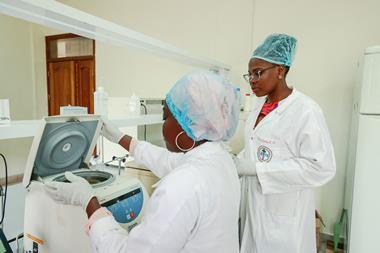Developing therapies for conditions that predominantly affect women is a neglected, but enormous, opportunity

Pharmaceutical and medical science has a massive knowledge gap around women’s health. As outlined in a special collection of Chemistry World articles, conditions that only affect women, or affect them very differently to men, have been systematically ignored or dismissed for most of medical history. And while that is changing, slowly, there is still a long way to go.
Problems linked to menstruation and menopause, for example, have suffered from societal taboos alongside the more general neglect (or deliberate ignorance) of the real and significant physiological differences between the sexes in terms of how they are affected by different conditions and the treatments developed for them.
As columnist Derek Lowe emphasises, ignoring these very real differences is tantamount to clinical malpractice. But while changes to research and clinical trial design guidelines are beginning to address some of the systematic biases in pharmaceutical development, there is a lot of catching up to do. The fragile progress that has been made is also easily undermined by attacks on all kinds of efforts to improve diversity, equity and inclusion (DEI). For example, as part of Donald Trump’s purge of US government DEI programmes, the Food and Drug Administration removed its draft guidance on increasing the diversity of patients included in clinical trials.
Part of the problem is convincing pharmaceutical companies to invest more resources into women’s health research. Despite the fact that these conditions potentially affect over half the world’s population, investment in developing therapies for female conditions (beyond cancers) is embarrassingly small – especially when compared to investment in conditions that predominantly affect men.
Entire categories of female conditions have also historically been ignored in the statistics used to calculate global disease burdens and health risk factors. That breeds a view that the market opportunity for such drugs is not worth the cost and risk of development. Addressing expectations over the eventual pricing and reimbursement of new drugs should provide greater incentive.
And while there are government and regulatory programmes to support development of drugs for other under-served areas of medicine such as rare and tropical diseases, few such programmes exist for women’s health. One of five policy recommendations from the World Economic Forum’sPrescriptions for Change white paper is to introduce innovation incentives – including tax credits, public-private investment matching and expedited regulatory reviews.
For too long women have suffered the societal disadvantages of biased healthcare. But even from a purely commercial point of view, the value of investing in women’s health – both to the pharmaceutical industry and to the global economy – is potentially enormous, and too big to continue to be dismissed or ignored.

















No comments yet